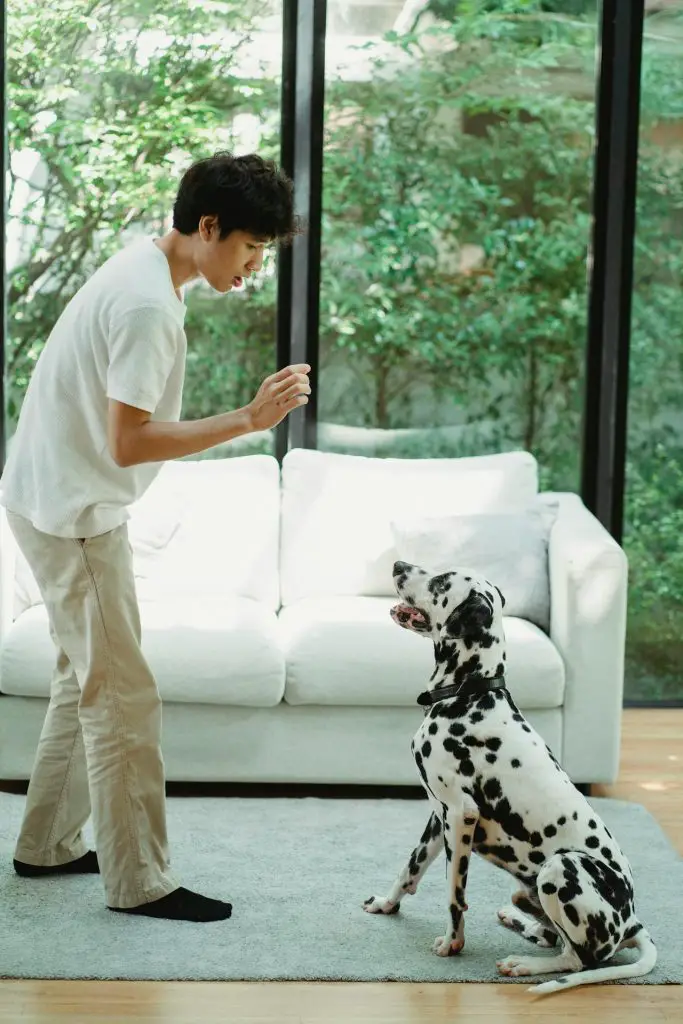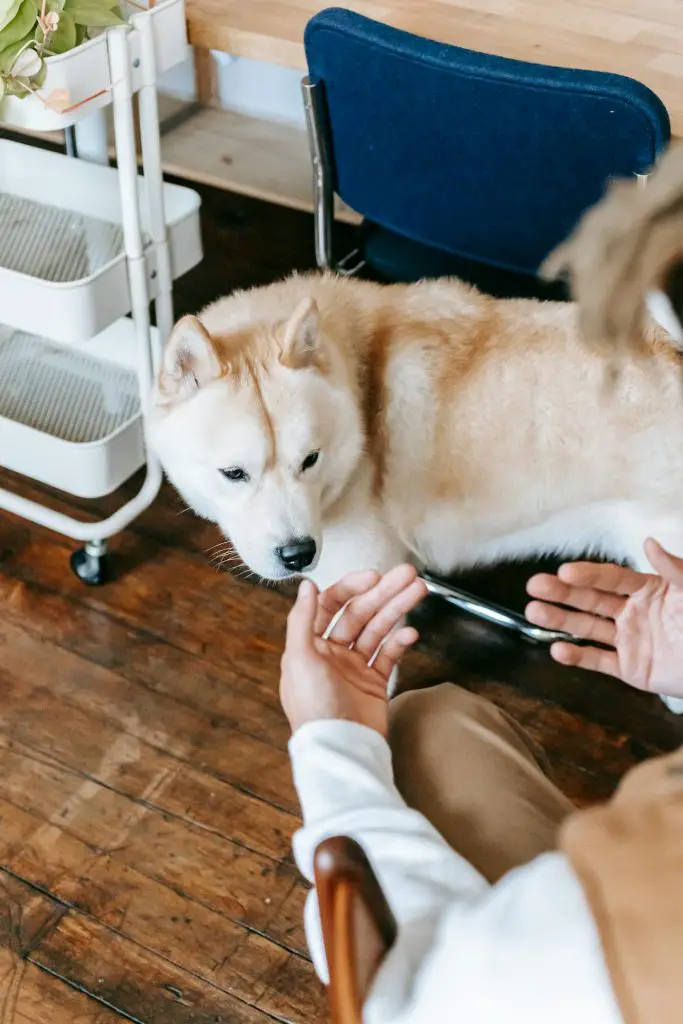
To train your dog to stop whining, you must first understand that whining is a form of canine communication driven by physical needs, emotional states, and environmental triggers. Identify the underlying reasons for your dog’s whining, and establish consistent training rules to create a structured environment. Ignore the whining behavior, as responding to it only reinforces it, and reward good behavior instead. Teach your dog alternative communication methods, such as vocalization cues, to express their needs without whining. By taking these steps, you’ll be well on your way to addressing the root causes of your dog’s whining.
Table of Contents
Understand Why Your Dog Whines

When your dog whines, it’s essential to recognize that this behavior is often a form of canine communication that can indicate various needs, wants, or emotional states.
You must understand the underlying reasons for your dog’s whining to address the root cause effectively.
Whining reasons can range from physical needs, such as hunger, thirst, or discomfort, to emotional needs, like attention, affection, or reassurance.
Your dog may also whine due to boredom, anxiety, or stress.
This post contains affiliate links. However all the information provided on this site are my own honest opinions. See more in Disclaimer.
Identify Triggers for Whining

To effectively address your dog’s whining, you must identify the specific triggers that set off this behavior, which can be vital in developing a targeted training plan.
Whining triggers can be diverse, ranging from emotional states such as anxiety and excitement to physical needs like hunger, thirst, or discomfort. Environmental factors, including sights, sounds, and smells, can also contribute to whining in dogs. By understanding what sparks your dog’s whining, you can create a more effective strategy to address the root cause of the behavior.
Observe your dog’s behavior closely to pinpoint their unique whining triggers. For instance, does your dog whine when they see you preparing to leave the house or when they hear noises?
Once you have identified the triggers, make a note of the context and the events leading up to the whining. This record will help you discern patterns and correlations, enabling you to develop a plan to specifically address these triggers and reduce whining over time.See our post on Best dog collar to stop whining for more tips.
Accurate identification of whining triggers is a significant step toward teaching your dog more constructive ways to communicate.
Establish Consistent Training Rules
Your dog’s training will benefit greatly from a clear set of rules that you consistently enforce, providing a structured environment that promotes effective learning and minimizes confusion.
Also See:
Consistency is key when it comes to training techniques and behavior modification. By establishing clear rules, you’ll help your dog understand what’s expected of them, reducing anxiety and stress that can lead to whining.
Here are three essential rules to get you started:
- Set clear boundaries: Establish what behaviors are acceptable and unacceptable in your home. Make sure everyone in the household is on the same page to avoid confusion.
- Use positive reinforcement: Reward good behavior with treats, praise, and affection. This encourages your dog to repeat the desired behavior.
- Be consistent in corrections: When correcting undesired behavior, use a firm but gentle tone and consistent body language. Avoid punishing or scolding, as this can create anxiety and undermine the training process.
Ignore Whining Behavior
By establishing a consistent set of rules, you’ve laid the groundwork for effectively addressing unwanted behaviors, including whining, which can be extinguished by strategically ignoring it.
One of the most significant whining misconceptions is that dogs whine solely due to emotional distress or need. However, research suggests that whining often functions as attention-seeking behavior. Dogs whine because it’s effective – it gets a reaction from you.
Ignoring whining behavior is vital in extinguishing it. When you respond to whining, you inadvertently reinforce it, creating a self-perpetuating cycle. By withdrawing attention during whining episodes, you’re taking away the reward associated with the behavior.
Initially, your dog may intensify their whining due to the sudden lack of response. However, it’s important to maintain your stance, as consistency is key. As your dog realizes whining no longer elicits a reaction, the behavior will gradually decrease.
Reward Good Behavior Instead
Redirecting your attention to desired behaviors allows you to reinforce alternative actions, thereby weakening unwanted habits, such as whining. This creates a counterconditioning effect that supports good behavior.
By focusing on what you want your dog to do instead of whining, you’re implementing positive reinforcement – a powerful tool for behavior modification.
Here are three ways to reward good behavior:
- Treats: Use tasty treats to reinforce desired behaviors, such as sitting quietly or calmly playing with a toy.
- Praise: Verbal praise can be a powerful reinforcer, especially when used in conjunction with physical rewards like treats or affection.
- Playtime: Reward your dog with extended playtime or a special activity, such as a walk or fetch session, when they exhibit good behavior.
Teach Alternative Communication
Effective communication is a two-way street; teaching your dog alternative ways to convey their needs and wants eliminates the need for whining and other undesirable behaviors.
By introducing alternative cues, you empower your dog to express themselves in a more acceptable manner. For instance, if your dog whines to initiate play, teach them to paw at a specific toy or use a distinct bark to signal their intent.
As you teach alternative cues, pay attention to your dog’s body language. A raised eyebrow, tilted head, or relaxed posture can indicate their understanding and acceptance of the new communication method. Conversely, a tense or avoidant demeanor may suggest confusion or resistance.
Be patient and adjust your approach as needed. Consistency and positive reinforcement are key to successful communication.
Manage Anxiety and Stress

As you address undesirable behaviors in your dog, identifying and mitigating underlying anxiety and stress become essential steps in promoting emotional well-being and reducing whining.
Anxiety and stress can exacerbate whining, making it vital to address these underlying issues. By implementing anxiety reduction and stress relief strategies, you can help your dog feel more calm and secure.
Here are three ways to manage anxiety and stress in your dog:
- Provide a Safe Space: Create a quiet, comfortable area where your dog can retreat when feeling overwhelmed.
- Exercise and Physical Activity: Regular exercise can help reduce anxiety and stress in dogs, while also promoting physical health.
- Positive Reinforcement Training: Focus on rewarding desired behaviors, rather than punishing undesired ones, to help build your dog’s confidence and reduce anxiety.
Stay Patient and Consistent

As you work to train your dog, it’s essential that you stay patient and consistent to achieve ideal results.
You’ll need to set clear expectations for your dog’s behavior, which will help you avoid confusion and frustration down the line.
Set Clear Expectations
To establish a strong foundation for training, you must clearly define what behaviors you want your dog to exhibit and consistently reinforce those expectations.
Setting clear expectations helps your dog understand what’s expected of them, reducing confusion and anxiety that can lead to whining. By establishing clear boundaries and using positive reinforcement, you can encourage good behavior and discourage whining.
Here are three key steps to set clear expectations:
- Define desired behaviors: Identify the specific behaviors you want your dog to exhibit, such as sitting quietly or calmly waiting for attention.
- Establish clear boundaries: Set clear rules and limits for your dog’s behavior, ensuring they understand what’s and isn’t acceptable.
- Consistently reinforce expectations: Use positive reinforcement techniques, such as treats and praise, to consistently reinforce desired behaviors and discourage whining.
Redirect Whining Behavior
By setting clear expectations, you’ve laid the groundwork for addressing whining behavior. Now you can focus on redirecting your dog’s whining to more desirable behaviors, a process that requires patience and consistency.
To start, identify the situations that trigger your dog’s whining, such as when they want attention or food. Next, teach your dog whining alternatives, like sitting or pawing at you calmly, to replace the whining. Positive reinforcement will be key in encouraging these new behaviors.
Trending in Dogs:
Introduce vocalization cues, like ‘quiet’ or ‘enough,’ to signal to your dog that whining isn’t allowed. When your dog begins to whine, say the cue word and withdraw attention until they exhibit a more acceptable behavior. Reward them immediately when they do.
This consistent reinforcement will help your dog associate the new behaviors with attention and affection, rather than whining. Remember, changing behaviors takes time, so stay committed to the training process and celebrate small victories along the way.
With patience and persistence, you can redirect your dog’s whining to more constructive forms of communication.
Frequent Questions
You shouldn’t punish your dog for whining, as it can create anxiety and worsen the behavior. Instead, focus on positive reinforcement by rewarding alternative behaviors, such as sitting or being quiet, to replace whining.
You’re sitting on a mountain of excuses, but it’s never too late to train an older dog – with the right approach! Effective techniques like positive reinforcement can curb whining, even in senior canines.
You’re likely wondering if certain breeds whine more than others due to inherent breed characteristics. Research suggests that some breeds may be more prone to whining due to specific whining triggers and genetic predispositions.
You’re likely to observe whining in dogs with separation anxiety, a common canine behavioral issue. As you investigate, you’ll find that separation anxiety greatly influences dog behavior, leading to distress vocalizations, including whining.
You’re among the 72% of dog owners who consider calming aids to address whining. While natural remedies like pheromone diffusers or calming treats can help, combining them with behavioral techniques yields the most effective results.














